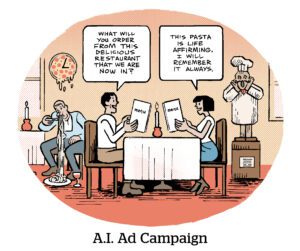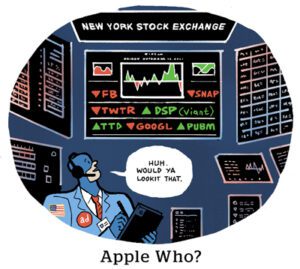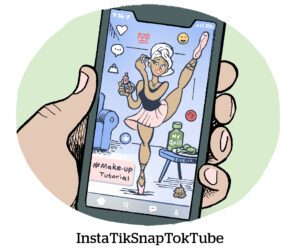Here’s today’s AdExchanger.com news round-up… Want it by email? Sign up here.
Not-So-Sweet Deal
A campaign without reporting is like an undressed salad. But Sweetgreen has to eat it anyway.
“I’ve been pushing my Google reps,” the brand’s director of media and growth Jeff Lin declared during a panel at the Possible conference in Miami, Adweek reports. “You want me to spend more money, give me more reporting.”
Lin also urged advertisers not to inherently trust an ad platform’s own measurement reports, which have a tendency to, you know, over-attribute the value of their own media.
One issue many advertisers have with PMax, for example, is that it doesn’t distinguish between Google channels, which makes it hard to know exactly what’s working. PMax reports everything as “Google.”
Sweetgreen must also untangle local campaigns. PMax may power up campaigns in certain cities, for instance, if that’s where conversions happen. But Sweetgreen wants more local visibility and control.
Too bad.
Brands may take a tough tone with Google, but almost all accept the visibility trade-off.
“Do you care whether it’s display or video, or did you just care about getting the conversions and the revenue?” Lin says.
That’s kind of a rhetorical question.
Mired In MFA
Ad verification vendors aren’t the only ones in the hot seat over made-for-advertising (MFA) sites.
Advertisers and agencies are also scrutinizing the Media Rating Council (MRC), which accredits the verification vendors responsible for blocking MFA from the programmatic bid stream.
The definition of MFA has shades of gray, but the recent case of a Forbes MFA subdomain exemplifies “probably the highest level of fraud,” a marketing exec tells Ad Age. It certainly counts as domain spoofing, which MRC standards are meant to address … and yet.
The MRC says it’s been working to update its invalid traffic standards since 2022 – but buyers can’t wait years.
With MFA in the spotlight, the MRC is now hurrying to update its standards by the end of the month.
The new standards will direct verification vendors to compare the header-bidding wrapper of a bid request with log-file data. The MRC will also put more pressure on vendors to identify and prevent instances like the Forbes www3 subdomain.
Even so, MRC CEO George Ivie told AdExchanger earlier this month that it’s unlikely vendors will lose accreditation unless the organization spots what it considers “material noncompliance.”
Whose Tube?
Nielsen’s monthly TV ratings report is out, and it underscores some interesting trends in the category.
Cable TV loses out overall – surprising nobody. But live news and sports still drive real scale and perhaps account for why broadcast ad revenue is so persistent. In May 2021, when Nielsen first launched this report, which it called The Gauge, broadcast accounted for 25% of television viewership. Now it’s 22.5%. Not bad, considering.
Broadcast got a boost this year from high ratings for the State of the Union speech and NCAA basketball tournaments, especially the women’s tourney.
Another insulator for the traditional broadcast business is that cable TV as a medium is down, but cable content viewership is up.
“Some of that shift has come from FAST channel providers (Pluto TV, The Roku Channel and Tubi TV), with a considerable portion of the titles being fueled by cable network content,” Nielsen writes.
Another standout is the YouTube app, which now represents 9.7% of all TV viewership.
Netflix, by comparison, gained 0.8% market share year over year – which is outstanding, by the way. Hulu, Disney and Amazon lost share in that time. (YouTube gained 1.9% share.)
But Wait, There’s More!
Ready for a chatbot version of your favorite Instagram influencers? [NYT]
MediaLink announces new leaders at its two core advisory practices following Michael Kassan’s exit. [Ad Age]
Live broadcast TV is still a thing, and now it’s getting a sort of built-in DVR. [The Verge]
Venture capitalists are betting on creator economy startups again. [The Information]
You’re Hired!
Warner Bros. Discovery hires David Porter as head of ad sales research, data and insights. [Variety]
Connatix promotes Dor Leitman to CTO. [release]














